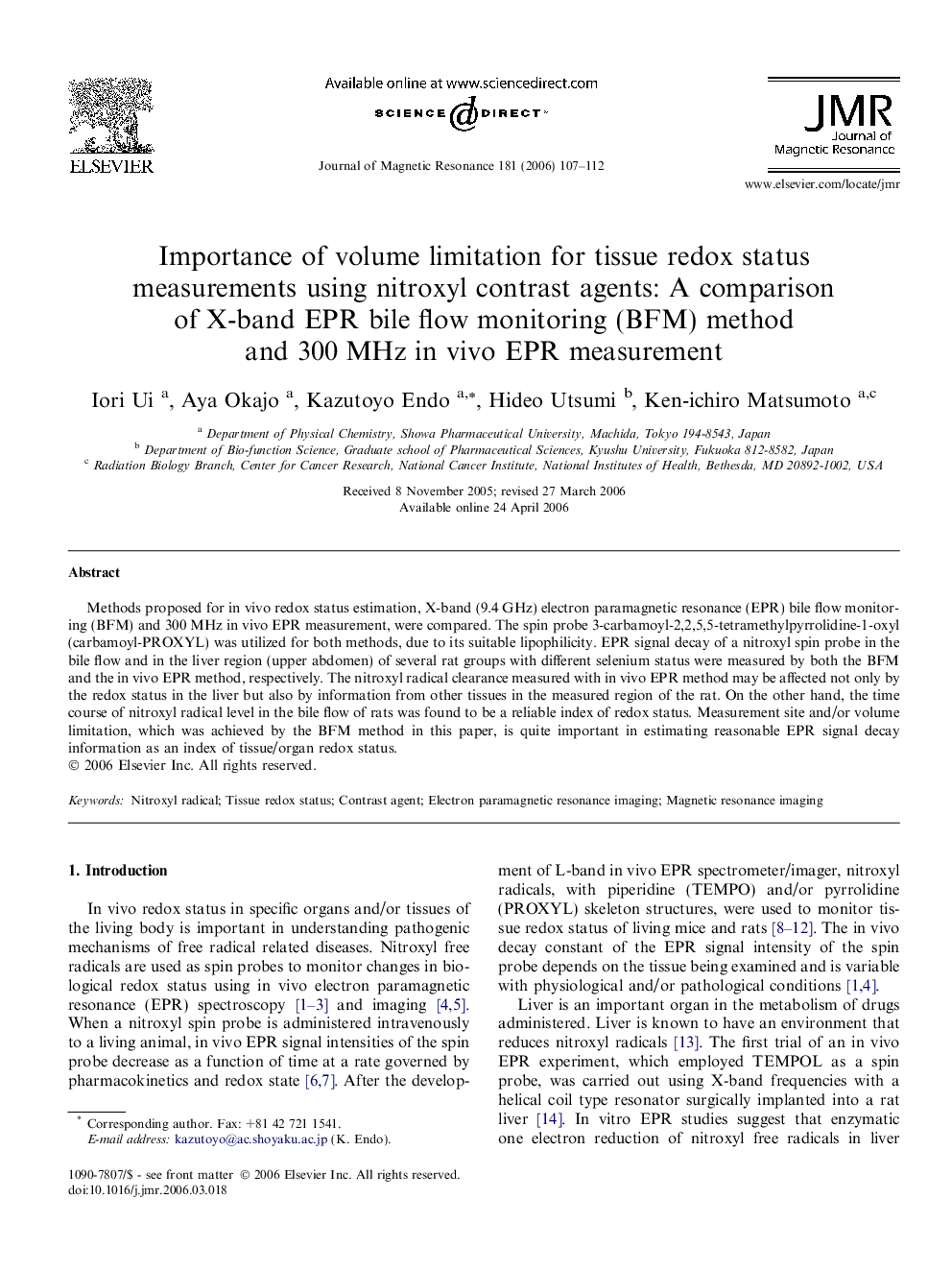| Article ID | Journal | Published Year | Pages | File Type |
|---|---|---|---|---|
| 5407780 | Journal of Magnetic Resonance | 2006 | 6 Pages |
Abstract
Methods proposed for in vivo redox status estimation, X-band (9.4Â GHz) electron paramagnetic resonance (EPR) bile flow monitoring (BFM) and 300Â MHz in vivo EPR measurement, were compared. The spin probe 3-carbamoyl-2,2,5,5-tetramethylpyrrolidine-1-oxyl (carbamoyl-PROXYL) was utilized for both methods, due to its suitable lipophilicity. EPR signal decay of a nitroxyl spin probe in the bile flow and in the liver region (upper abdomen) of several rat groups with different selenium status were measured by both the BFM and the in vivo EPR method, respectively. The nitroxyl radical clearance measured with in vivo EPR method may be affected not only by the redox status in the liver but also by information from other tissues in the measured region of the rat. On the other hand, the time course of nitroxyl radical level in the bile flow of rats was found to be a reliable index of redox status. Measurement site and/or volume limitation, which was achieved by the BFM method in this paper, is quite important in estimating reasonable EPR signal decay information as an index of tissue/organ redox status.
Keywords
Related Topics
Physical Sciences and Engineering
Chemistry
Physical and Theoretical Chemistry
Authors
Iori Ui, Aya Okajo, Kazutoyo Endo, Hideo Utsumi, Ken-ichiro Matsumoto,
